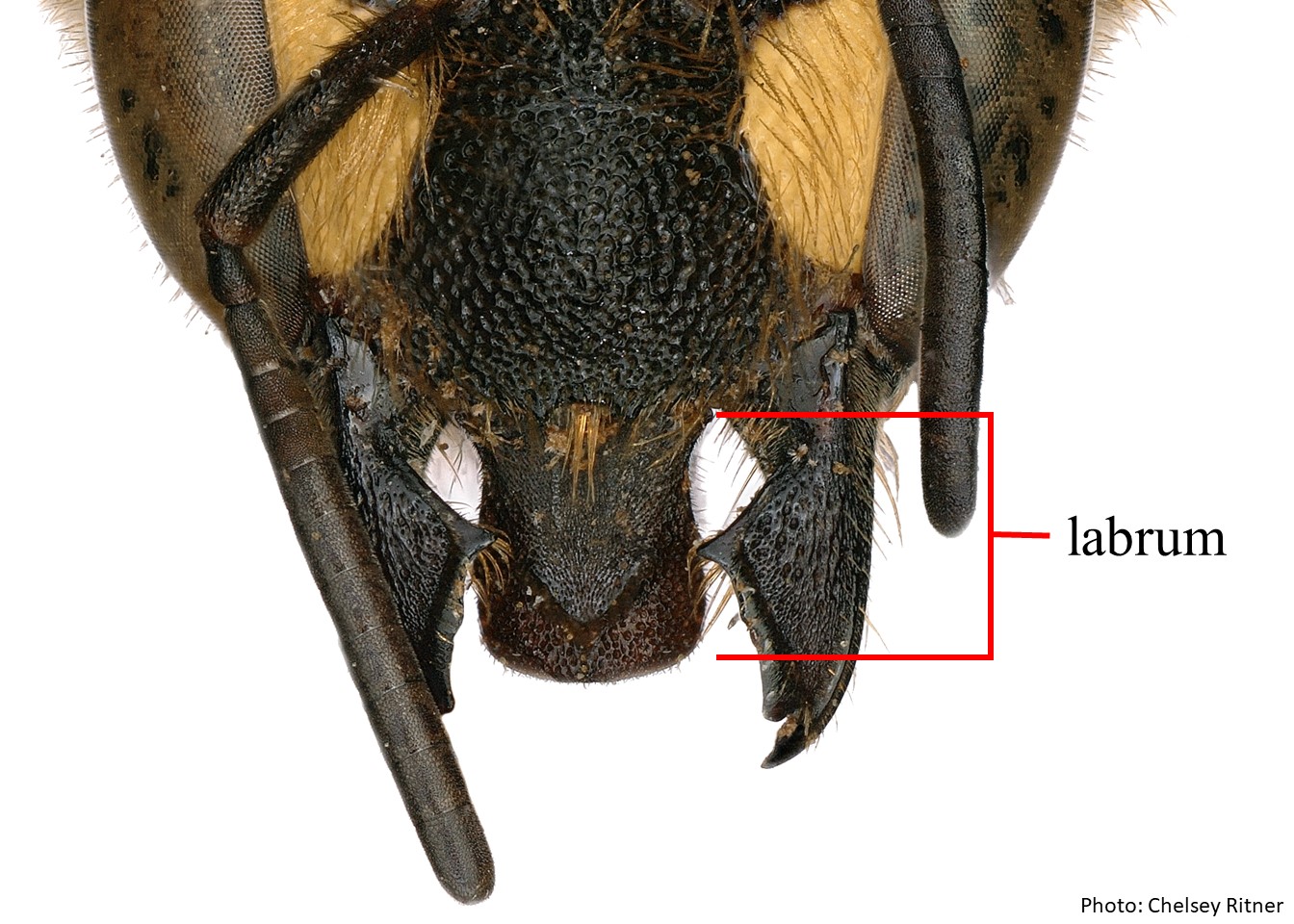Family: Megachilidae
Subfamily: Megachilinae
Tribe: Megachilini
Genus: Saucrochile Gonzalez & Engel, 2019
Common name: none
Saucrochile are small, elongate bees with shiny black integumentintegument:
a tough, protective outer layer
and white apicalapical:
near or at the apex or end of any structure
hair bandsbands:
usually referring to bands of hair or bands of color that traverse across an abdominal segment
on the tergaterga:
the segments on the top side of the abdomen, often abbreviated when referring to a specific segment to T1, T2, T3, T4, T5, T6, or T7 . They range in body length from 8–11mm. The genus name is based on the Greek words “saukros” and “chile,” which can be translated to “graceful” and “tooth,” respectively (Gonzalez et al. 2019Gonzalez et al. 2019:
. They range in body length from 8–11mm. The genus name is based on the Greek words “saukros” and “chile,” which can be translated to “graceful” and “tooth,” respectively (Gonzalez et al. 2019Gonzalez et al. 2019:
Gonzalez, V.H., G.T. Gustafson, and M.S. Engel. 2019. Morphological phylogeny of Megachilini and the evolution of leaf-cutter behavior in bees (Hymenoptera: Megachilidae). Journal of Melittology (85): 1-123.).
(modified from Gonzalez et al. 2019Gonzalez et al. 2019:
Gonzalez, V.H., G.T. Gustafson, and M.S. Engel. 2019. Morphological phylogeny of Megachilini and the evolution of leaf-cutter behavior in bees (Hymenoptera: Megachilidae). Journal of Melittology (85): 1-123.)
 long and parallel-sided.
long and parallel-sided. with strong postgradular grooves.
with strong postgradular grooves. with preapicalpreapical:
with preapicalpreapical: with four small, equidistant teeth.
with four small, equidistant teeth. with slightly projected preapicalpreapical:
with slightly projected preapicalpreapical:Saucrochile may look similar to some species of Hackeriapis in size, coloration, and elongate body shape. Saucrochile differs in the lack of a basalbasal:
originating at the foundation of a structure
tooth on the tarsal claws and the rounded pronotal lobepronotal lobe:
a part of the pronotum located dorsally on the posterior margin of the pronotum and overlaps the anterior thoracic spiracle (Gonzalez et al. 2019Gonzalez et al. 2019:
Gonzalez, V.H., G.T. Gustafson, and M.S. Engel. 2019. Morphological phylogeny of Megachilini and the evolution of leaf-cutter behavior in bees (Hymenoptera: Megachilidae). Journal of Melittology (85): 1-123.).
Floral associations are unknown.
Nesting behavior is unknown.
Saucrochile includes one species, Saucrochile heriadiformis, which was previously included in the genus Hackeriapis (Gonzalez et al. 2019Gonzalez et al. 2019:
Gonzalez, V.H., G.T. Gustafson, and M.S. Engel. 2019. Morphological phylogeny of Megachilini and the evolution of leaf-cutter behavior in bees (Hymenoptera: Megachilidae). Journal of Melittology (85): 1-123.).
There are no known invasives.
Saucrochile are known from southeastern Australia (King 1994King 1994:
King, J. 1994. The bee family Megachilidae (Hymenoptera: Apoidea) in Australia. I. Morphology of the genus Chalicodoma Lepeletier, and a revision of the subgenus Hackeriapis Cockerell. Invertebrate Taxonomy 8: 1373-1419.; Ascher and Pickering 2020Ascher and Pickering 2020:
Ascher, J.S. and J. Pickering. 2020. Discover Life bee species guide and world checklist (Hymenoptera: Apoidea: Anthophila). https://www.discoverlife.org/mp/20p?see=Carinulaamp;name=Megachileamp;flags=subgenus :).

Distribution map generated by Discover Life -- click on map for details, credits, and terms of use.
Ascher, J.S. and J. Pickering. 2020. Discover Life bee species guide and world checklist (Hymenoptera: Apoidea: Anthophila). https://www.discoverlife.org/mp/20q?search=Megachile+heriadiformis&mobile=close&wep=0
Gonzalez, V.H., G.T. Gustafson, and M.S. Engel. 2019. Morphological phylogeny of Megachilini and the evolution of leaf-cutter behavior in bees (Hymenoptera: Megachilidae). Journal of Melittology 85: 1-123.
King, J. 1994. The bee family Megachilidae (Hymenoptera: Apoidea) in Australia. I. Morphology of the genus Chalicodoma Lepeletier, and a revision of the subgenus Hackeriapis Cockerell. Invertebrate Taxonomy 8: 1373-1419.